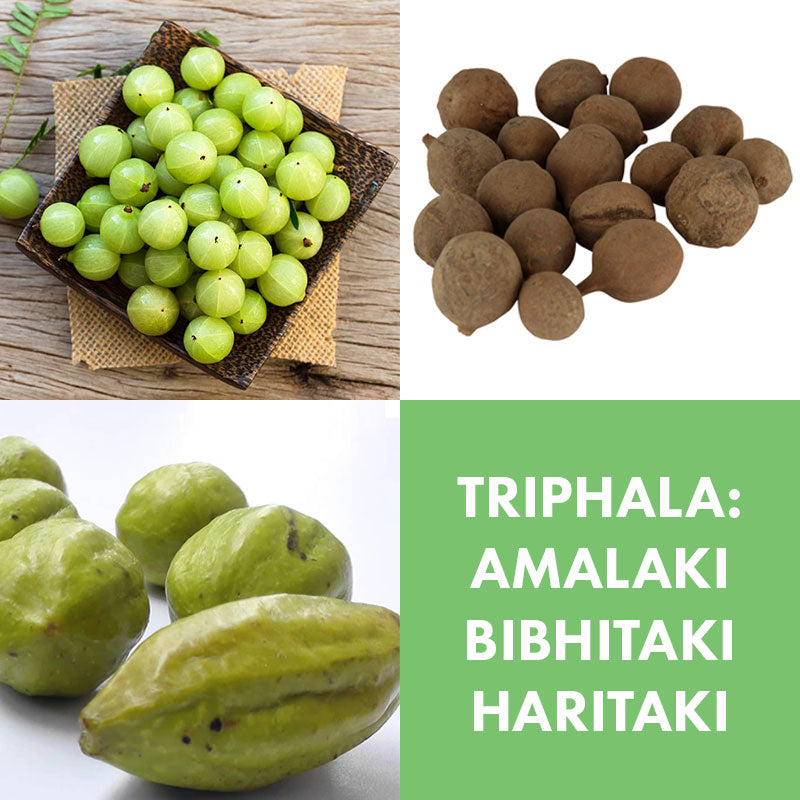
The Three Fruits of Triphala
For thousands of years, the indigenous peoples of India have relied upon the ancient wisdom of Ayurveda, a masterful system of holistic health designed to confer balance between mind, body and spirit, promoting strength, peace and well-being to those who follow its guidance.
One of the many ways that Ayurveda works to prevent and treat illness and imbalance is through the proper use of medicinal herbs and spices, therapeutic oils, and foods. One popular time-tested formula is Triphala, a combination of three amazing fruits – Amalaki, Haritaki and Bibhitaki. While similar in certain properties, each fruit has its own specific character and action that, when taken together as one formula, create Triphala (meaning “three fruits”), a tonic used to nourish the mind and body, promote longevity, gently cleanse and detox the system, all while aiding and supporting good digestion and intestinal health. Here’s a closer look at each specific fruit:
Amalaki
Of all three fruits that make up Triphala, Amalaki (aka Amla and Indian Gooseberry) is the most recognized and widely used. To this day, it remains a favorite among Ayurvedic practitioners. Amalaki is packed with vitamin C, fiber and plant compounds called “phenols” and antioxidants, and is used to help lower cholesterol levels. While it can be used to treat all doshas, it is particularly calming and balancing for Pitta dosha. Although this NIH-published article notes the prevention and treatment of cancer in its title, it describes many uses for Amalaki including the treatment of colds and flu, its use as a liver tonic, a laxative, a restorative, an anti-inflammatory agent and a diuretic, also noting that Amla can benefit both the heart and gastrointestinal system.
Haritaki
Due to its extraordinary potential for healing, Haritaki (Terminalia Chebula) is often referred to as The King of Medicine. In Ayurveda, it is known to possess strong anti-inflammatory properties and is most calming and balancing to Vata dosha. Like Amalaki, Haritaki is a potent source of antioxidants and other important compounds that, according to this NIH-published article, shows great promise in both the prevention and treatment of numerous diseases including digestive and urinary disease, diabetes, skin disease, heart disease, irregular fevers, constipation, ulcers, vomiting, colic pain and hemorrhoids.
Bibhitaki
The third fruit in the Triphala compound is Bibhitaki (Terminalia Belerica), known among healers as “the one who keeps away disease”. Due to its usefulness in alleviating conditions involving excess mucus, it is therapeutic and balancing for Kapha dosha. Bibhitaki contains a number of plant compounds that lend to its inherent healing abilities. It is considered a powerful antioxidant and anti-inflammatory which, in Ayurveda, has been used to help regulate blood sugar and treat diabetes. It is also thought to have anti-ulcer benefits, and as part of the Triphala formula has anticancer and antimicrobial properties. In this article, Bibhitaki is shown to play a vital role in reducing serum uric acid levels which means it shows great potential for treating gout and hyperuricemia (abnormally high levels of uric acid in the blood).
As with all medicinal herbs, we recommend you consult a qualified health care practitioner if you are pregnant, nursing, taking any medications or have a medical condition, or if you experience an allergic reaction.

1 comment
Very informative. Thank you